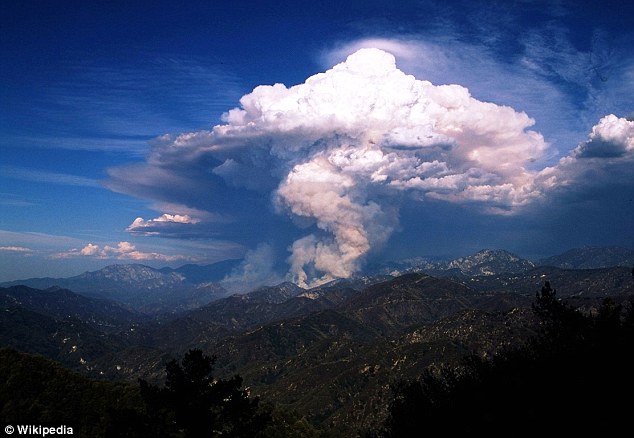Eyes to the sky! Met Office officially recognises 11 new types of clouds but courts controversy by including plane VAPOUR TRAILS
- The Met Office and World Meteorological Organisation will add 11 new clouds
- Amateur meteorologists captured the unrecorded cloud types
- The additional 11 clouds are the first new types to be recognised in decades
- One new type of cloud is a Volutus, a long, low, horizontal cloud that rolls slowly
They are notoriously difficult to pin down – and most of us don’t have the foggiest idea about them.
But today 11 new kinds of cloud will be officially recognised by weathermen.
The British
Met Office and World Meteorological Organisation said it had made the decision after exhaustive research – with many pictures sent in by amateur cloudspotters around the world.
The bodies said they were confident that the clouds it was listing are regularly occurring weather patterns, and not just freakish weather patterns.

Eleven new types of clouds will be officially recognised today, after amateur meteorologist documented the various differences in cloud type, shape and movement (pictured: Volutus)
The naming of clouds is a complicated matter. The water vapour formations are broken down by genus (plural genera); species; ‘special’ varieties and supplementary features.
The ten ‘genera’ are based on cloud’s differing thickness and where they form in the sky.
They range from ‘wispy’ cirrus clouds high up down to lower cumulonimbus – the dense, dark scary clouds associated with thunderstorms – sometimes known as the ‘king of clouds’. Included in this are lenticular clouds – spectacular pancake shaped clouds.
The new species – brings the total of cloud species up to 15.
Going by the name Volutus, the new species is described in the guidebook as ‘long, typically low, horizontal, detached, tube-shaped cloud mass’ and often appears to ‘roll slowly about’.

Pictured is a Volutus, the first new species to be classified in decade - a long, typically low, horizontal, detached, tube-shaped cloud mass’ which often appears to ‘roll slowly about
A particularly fine example was snapped in Victoria, Australia.
In what may prove controversial, the cloud atlas also recognises that the condensation trails (contrails) left by aeroplanes are a type of cloud.
The Atlas says contrails that last for 10 minutes will be classed as a ‘variety’ of Cirrus cloud – Cirrus homogenitus – although as these contrails are so transitory it does not allow any other supplementary feature to be applied to it.
The World Meteorological Organisation (WMO), which oversees the atlas, is renowned for its conservative approach.
The reference work, which first appeared in 1896, has not seen significant change since the 1970s. Another special cloud is Flammagenitus, clouds formed as a result of forest fires.

Met Office Chief Executive Rob Varley said: ‘Clouds play a key role in the function of our planet’s climate system and the naming of the new Volutus species of cloud shows that we are continually learning and developing our understanding.’ (pictured: the Flammagenitus cloud)
These are formed by rising warm currents of air coming from smoke – leading to a blob of white cloud above a rising column of smoke.
Also gaining recognition is a spectacular ‘cloud feature’ called Asperitas – the Latin for ‘rough’ - bumpy, wave-like structures in the underside of various different types of cloud.
The inclusion of Asperitas is a feather in the cap of amateur cloudwatcher Gavin Pretor-Pinney, British author of the Cloudspotters guide, who has championed the inclusion of Asperitas in the atlas.

In what may prove controversial, the cloud atlas also recognises that the condensation trails - known as contrails - left by aeroplanes are a type of cloud
.Other new ‘supplementary’ cloud features include the sinister wall cloud, or murus, a giant dark ‘wall’ that descends to the ground from storm clouds.
Yet another are ‘fall streak holes’ – giant holes in clouds that appear in a cloudy sky, and Kelvin-Helmholtz wave clouds – which look like ocean waves.
Met Office Chief Executive Rob Varley said: ‘Clouds play a key role in the function of our planet’s climate system and the naming of the new Volutus species of cloud shows that we are continually learning and developing our understanding.’
